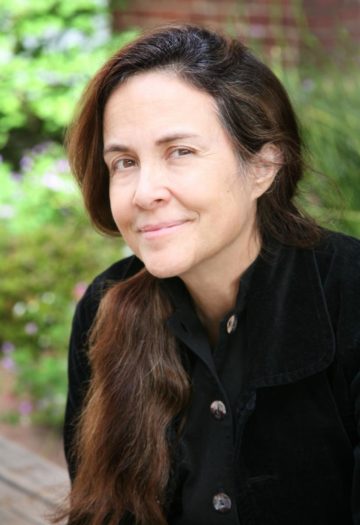Plowshares in the City

a place to grow:voices and images of urban gardeners.
Photography by Don Snyder.
This is the book I would choose to drop from planes. Not over the rural countryside, which doesn’t need it as much, but over every congested cityscape in the U.S.A., attaching small parachutes made of sturdy cabbage leaves so it might drift peaceably into unsuspecting hands. The very elegant a place to grow packs a wallop of power and wisdom in its inviting pages, offering a remedy every city we know and love might benefit from.
The book opens with an inspiring introduction by Cathrine Sneed, a leader in the urban gardening field. Sneed has gardened with prisoners since 1984 in San Francisco, founding The Garden Project (ex-prisoners growing and selling organic produce), The Tree Corps (a tree-planting cooperative between ex-prisoners and neighborhoods), and The School Corps (students planting gardens and beautifying school grounds in low-income neighborhoods). She urges us to “think little,” a refreshing suggestion, in order to increase the number of national gardening projects, currently numbering somewhere between 250 and 500. She reminds us that by the year 2000, more than half the world’s population will live in cities. And she pierces the high-budget glossy attitudes of many current gardening catalogues replete with shiny accessories: “We didn’t start our garden with much – no fancy tools or sheds, boots or compost bins.”
Immediately there’s a sense that gardening isn’t just about plants and produce. It’s about neighborhoods, pleasure, and attitude. It’s about turning blighted vacant fields and lots into productive havens. Keyword: cooperation. Some of the gardens evolve into “oases of peace” and “prayer gardens.” Some are tilled by powerpacked combinations of elders and teens. A scan through the pages rich with beautiful, mostly black and white photographs by Cleveland photographer Don Snyder convinces us, even before reading this book, that we would like to be part of the garden. We would like to listen to what these faces know.
Editors David Hassler and Lynn Gregor, residents of Kent, Ohio, have presented stories through the moving voices of the gardeners themselves. Gregor is program assistant for the urban gardening program Cultivating Our Community. The well-edited interviews read cleanly and musically, perhaps thanks to Hassler’s background as a poet. Nothing sounds cluttered or redundant. The passion in these voices rings true.
A taste: “If I can’t get my hands in dirt, then I’ll get sick. And it’s true! Cause I’m out there digging in the dirt all the time.” Or “Every morning I get up and open the door, get the air in the back door and front. Let nature in. I wake up with joy.” Or “I used to let people know that bein’ a farmer was nothin’ dumb. You had to have some education on how to plan, how much fertilizer to use, how to plant seed, the whole bit. You couldn’t just throw some seeds in the ground.”
Or, “Every time I drive in the city of Cleveland and I see an empty area of land I think, ‘Oh, that would make a nice garden.’ I mean, I’m looking for east-west exposure, I’m looking for the hydrant – it’s contagious!”
Or, “Down 65th Street there’s a hole in the fence there about yea big. I’ll see somebody walking by, and I’ll say, ‘A tomato, ma’am? A tomato, mister?’ They say, ‘Yeah, sure.’ So I go up to the hole and hand ’em the tomatoes. The hole in the fence. I call it my A.T.M.!”
This book could be filed under philosophy as well as gardening in your bookstore. Some of the issues it raises (in Ohio, one gardener says, “They’ll let you use any land on the highway as a community garden if it’s available”) are worth checking into, wherever we are. What about that lot on the corner that’s been vacant for thirty years? What else could we do in it? Vineyards? Watermelon vines?
One of the most obvious lessons of this book is the need for collaboration in any neighborhood gardening project. The openness and upbeat spirits of the practical gardeners introduced here is deeply compelling and warm. No one tends an urban garden singlehandedly. What about that shelter for the homeless three blocks away? What about that juvenile facility surrounded by weeds? I’m reminded of a postcard someone sent me last year that simply read, “Out-of-doors is the best cure.”
A list of organizations dedicated to urban gardening and projects in action around the country ends the volume, giving any new advocate further references and sources.
Get this book immediately, despite its somewhat hefty paperback price, then figure out how to channel it to people who could put its message into action. Be one of them.
Naomi Shihab Nye is the author of numerous volumes of poetry, fiction, and essays, most recently Fuel and Habibi, and has edited the Observer‘s poetry page since 1995. Copies of A Place To Grow are available from The Pilgrim Press in Cleveland, Ohio 44115. To order, call (800) 537-3394.


